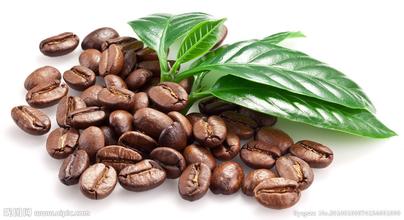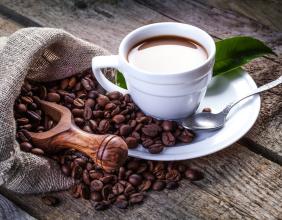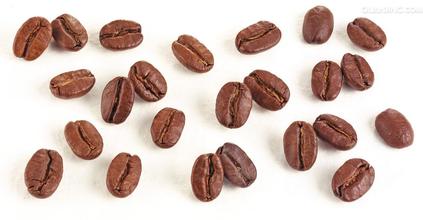How to use the hand-brewed drip cup-coffee brewing method Introduction
The use steps of hand dripping filter cup-introduction to the brewing method of coffee
One V60 extraction skill one
This V60 filter cup will not be blocked easily unless you grind the coffee powder very fine. When the flow of water is controlled quickly, you can grind the powder a little finer.
Since the V60 has four different materials, you should also take the material into account when you preheat it. It takes longer to heat ceramic filter cups than stainless steel, glass, plastic and copper.
Pour water counterclockwise, which makes it easier for coffee powder to tumble in it to achieve a more perfect extraction. Since the shape of the V60 is a cone, you need to prepare a long-necked kettle, otherwise, it will be difficult to inject water in a circle, which is important for controlling the flow rate of the water.
After putting the coffee powder into the filter cup, pour about twice as much water as the coffee powder, and then let the coffee powder expand. This is my favorite part, because I can see for myself that the prepared coffee is so fresh.
After waiting for 30-45 seconds, begin to inject water in a circle, which is affected by the thickness of the coffee powder and the flow rate of the water, but ideally it takes about 2-4 minutes.
1. Warm the cup. Everyone knows that the tannins in the coffee do not work as expected, making the coffee very sour, so we should pour hot water into the coffee cup before we start brewing the coffee.
two。 Grind beans. The thickness of hand-made coffee should also be adjusted according to the characteristics of coffee beans, and the powder thickness of deep-roasted coffee beans should be slightly thicker than that of medium-deep roasted beans. Specifically, the deep-roasted beans of carbon-roasted coffee are 4, while those of medium-and deep-roasted beans like Blue Mountain should be 3. 5. If the bean powder is too thick, the coffee is not strong enough, if it is too fine, the coffee will be very bitter. There is also the problem of the quantity of coffee beans. The amount of beans in a cup of coffee is 12-14g, while the quantity of 2 cups should be calculated by formula-2) X2, three or more cups is simple, 3 times 30g, 4 cups 40g, and so on.
3. Assemble utensils. Hand-brewed coffee is mainly composed of three parts, filter paper, filter cup and filter pot. If you pay attention to it, there should be an incubator under the filter pot to prevent the coffee from getting cold during brewing. The size specifications of filter paper, filter cup and filter pot should match. For example, two-person filter paper should be matched with two-person filter cup.
4. Transfer bean powder. Pour the ground bean powder into the combined filter paper, then gently pat the filter cup to pat the soybean powder and smooth the surface. So that the powder can receive water evenly in the following steps.
5. Warm the pot. Pour a small amount of hot water into the bottom pot, shake a few times, and then pour out. Then put the solid bean powder on the bottom pot.
6. It is stifling and steaming. The purpose of steaming is to stuffy the aroma of coffee and prepare for the second brewing. The steaming water temperature should be 93 degrees. Pour water from the center of the bean powder and circle it for 2-3 times, so that all the soybean powder can absorb water evenly. It is best to drop 3-5 drops of water. After absorbing water, soybean powder will expand, from the previous flat to the upward protruding arc. At this time, you can smell the faint fragrance of coffee powder. This step is particularly important and is one of the decisive factors in determining the success of a cup of coffee.
7. Brew. After steaming, put the kettle on a moist cloth to cool down. 25-30 seconds later, the water temperature drops to 89-91 degrees, and you can brew. Generally speaking, the brewing temperature of moderately roasted coffee beans (we call inert beans) is 91 degrees, which can better extract the aroma of coffee beans, while the brewing temperature of deep-roasted coffee beans (lively beans) is 89 degrees Celsius. This water temperature is enough to extract the aroma and bitterness of coffee beans. If the water temperature is too low, the water temperature is a little light, and the water temperature is too high. The brewing water can be a little thicker than the steaming one, but it must also be stable. The amount of coffee can be controlled by the number of laps and the speed of the current. Whether it is brewing one or three cups of coffee, the water simply needs to inject water in a circle from the center, then back to the center from the outer circle, to the center of the circle to collect water, and the brewing is over. In the brewing process, be sure not to wash the water into the filter paper, otherwise the coffee will be very astringent. Generally speaking, the amount of coffee brewed should be 0.5 more than the mark of the pot, otherwise the amount of coffee will not be enough.
8. Fill the cup. Shake the coffee in the pot gently before filling the cup so that it is fully mixed so that each cup of coffee tastes evenly. Then pour out the warm cup of water, pour the coffee into the cup and set the plate for dinner.
9. Matters needing attention. The whole coffee brewing process from warm cup to cup to drink (within 4 cups), the time should not be more than 2 minutes, otherwise the taste of coffee will become sour, astringent, and lose its original aroma.

Important Notice :
前街咖啡 FrontStreet Coffee has moved to new addredd:
FrontStreet Coffee Address: 315,Donghua East Road,GuangZhou
Tel:020 38364473
- Prev

Porbat coffee bean roaster flue gas treatment-baking degree
Porbat coffee bean roaster smoke treatment-roasting degree there has been a craze for roasting coffee beans in small quantities in recent years, and there are many household roasters on the market, making it quite easy to roast coffee beans yourself. At present, household roasters can be divided into three types: self-ignition type, hot air type and drum type. Although, these are not very sophisticated professional models, but as long as they are operated properly,
- Next

Cappuccino Features Coffee Flavor Description Grind Scale Variety Introduction
Cappuccino characteristics coffee flavor description grinding scale varieties do not know, you think that layer of milk foam is only embellishment, but in fact foam is the decision cappuccino coffee taste good. Milk must be defatted, and then use a special frother to beat milk, so that the milk is very uniform, very delicate. Coffee cups also have requirements, cups should use hot water
Related
- What brand of black coffee is the most authentic and delicious? what are the characteristics of the flavor of the authentic Rose Summer Black Coffee?
- Introduction to the principle and characteristics of the correct use of mocha pot A detailed course of mocha pot brewing coffee is described in five steps.
- Which is better, decaf or regular coffee? how is decaf made?
- How much is a bag of four cat coffee?
- How about four Cat Coffee or Nestle Coffee? why is it a cheap scam?
- Which is better, Yunnan four Cats Coffee or Nestle Coffee? How about cat coffee? is it a fake scam? why is it so cheap?
- How about Cat Coffee? what grade is a hoax? which instant coffee tastes better, four Cat Coffee, Nestle Coffee or G7 coffee?
- Process flow chart of coffee making-Starbucks coffee making process what coffee tastes good at Starbucks
- The top ten best coffee beans in the world Rose summer coffee or Tanzanian coffee tastes good
- Yunnan four cat coffee is good to drink?_four cat coffee is a big brand? four cat blue mountain coffee is fake?

